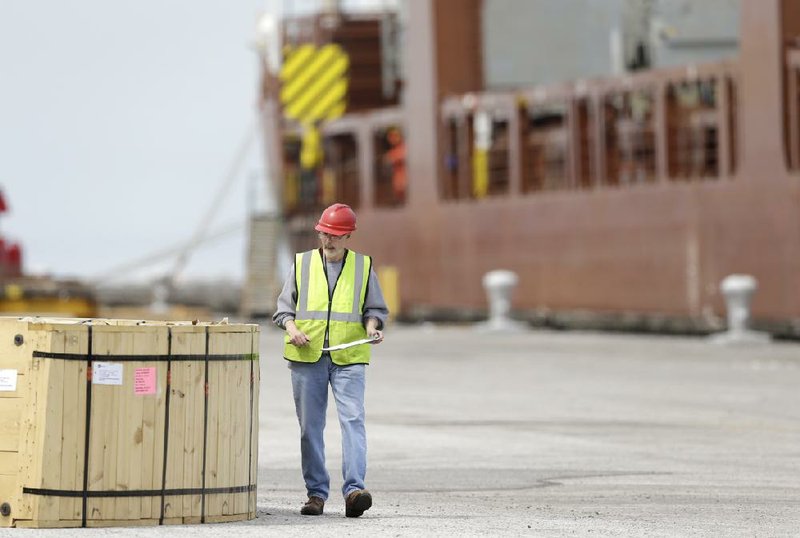WASHINGTON -- The U.S. trade deficit fell in May as U.S. exports hit an all-time high, helped by a jump in exports of petroleum products. Imports dipped slightly.
The trade deficit narrowed 5.6 percent in May to $44.4 billion after hitting a two-year high of $47 billion in April, the Commerce Department reported Thursday. The median forecast in a Bloomberg survey of 69 economists called for a contraction to $45 billion.
Exports of goods and services rose 1 percent to a record $195.5 billion in May while imports fell a slight 0.3 percent to $239.8 billion.
A lower trade deficit boosts overall economic growth when it shows U.S. companies are earning more in their overseas sales. Economists are looking for a smaller trade deficit in the April-June quarter to help propel growth in output after the economy shrank in the first quarter at a 2.9 percent rate.
Many analysts expect growth will rebound to a healthy rate between 3 percent and 3.5 percent, helped in part by stronger exports.
In 2013, the trade deficit declined 11.3 percent to $476.4 billion. That reflected in part a boom in U.S. energy production that cut into America's dependence on foreign oil while boosting U.S. petroleum exports to a record high.
The larger trade gap in the first three months of this year, compared to the fourth quarter, shaved 1.5 percentage points from growth. Economic growth in the first quarter, as measured by the nation's gross domestic product, shrank at a revised 2.9 percent annualized rate, the worst reading since 2009. The larger trade gap was a big factor in helping to push the economy into reverse. In addition to a higher trade deficit, the economy was held back by a severe winter, which dampened consumer spending.
In May, the U.S. trade deficit with China rose 5.4 percent to $28.8 billion. Through the first five months of this year, America's deficit with China is running 3.2 percent ahead of last year's record pace.
Officials from both countries will meet in Beijing next week for annual high-level talks covering economic and foreign policy issues. Previewing the discussions Tuesday, Treasury Secretary Jacob Lew said the Obama administration would push China to allow its currency to rise against the dollar. The Chinese yuan has declined by about 2.4 percent against the dollar so far this year.
American manufacturers contend the Chinese currency is undervalued by as much as 40 percent and the Chinese government is manipulating the value to gain trade advantages. A weaker yuan makes Chinese goods cheaper in the United States and U.S. products more expensive in China.
Lew said that computer security would be another issue discussed. In May, the Justice Department charged five Chinese military officers with hacking into U.S. companies' computer systems to steal trade secrets.
Information for this article was contributed by Jenna Smialek of Bloomberg News.
Business on 07/04/2014
